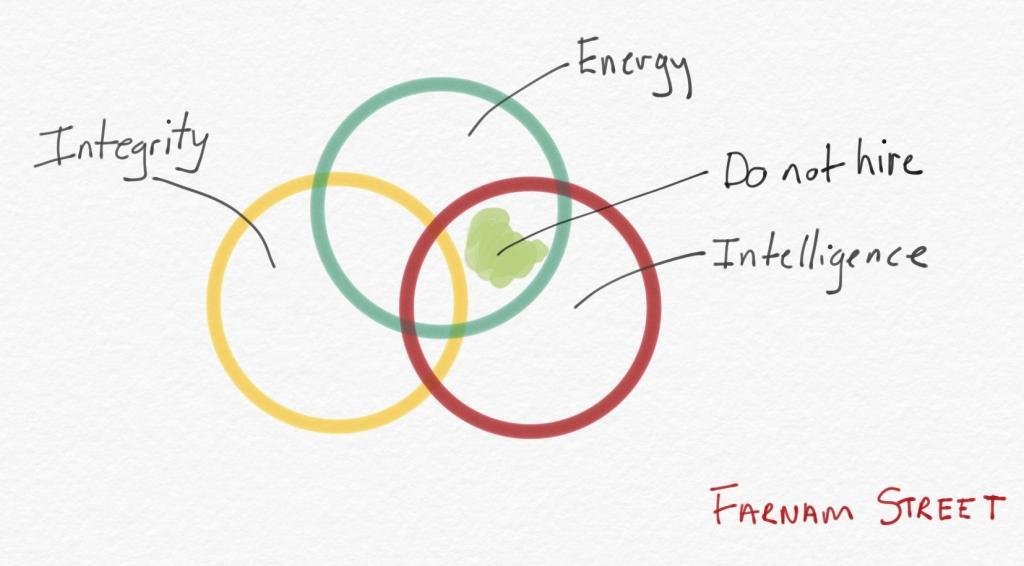Buffett first purchased Coca-Cola in 1988. In 1988:
- Owner earnings (net cash flow) of Coca-Cola = $828 million.
- Risk free rate of 30 year US Treasury Bond = 9% yield.
Discounted value of Coca-Cola's current owner earnings.
If Coca-Cola's 1988 owner earnings were discounted by 9% (Buffett does not add an equity risk premium to the discount rate):
- the value of Coca-Cola would have been $828m/9% = $9.2 billion.
$9.2 billion represents the discounted value of Coca-Cola's current owner earnings.
Was Buffett paying too much for Coca-Cola?
When Buffett purchased Coca-Cola, the
market value of the company was
$14.8 billion, indicating that Buffett might have overpaid for the company.
Because the market was willing to pay a price for Coca-Cola that was
60% higher than $9.2 billion, it indicated that buyers perceived part of the value of Coca Cola to be its future growth opportunities.
People asked, "Where is the value in Coke?"
The company's price was
- 15x earnings (30% premium to the market average), and,
- 12x cash flow (50% premium to the market average).
Where is the value in Coke? Its net cash flows discounted at an appropriate interest rate.
Buffett first purchased Coca-Cola in 1988.
Buffett paid 5x book value for a company with a 6.6% earning yield.
The company was earning a
31% ROE while employing
relatively little in capital investment.
The value of Coca-Cola, like any other company, is determined by the net cash flows expected to occur over the life of the business, discounted at an appropriate interest rate.
When a company is able to grow owner earnings
without the need for additional capital, it is appropriate to discount owner earnings by
the difference between the risk-free rate of return (k) and the expected growth (g) of owner earnings, that is (k-g).
Using a two-stage discount model
Analyzing Coca-Cola, we find that owner earnings from 1981 through 1988
grew at 17.8% annual rate - faster than the risk-free rate of return.
When this occurs, analysts use a
two-stage discount model.
- This model is a way of calculating future earnings when a company has extraordinary growth for a limited number of years, and
- then a period of constant growth at a slower rate.
We use this two-stage process to calculate the 1988 present value of the company's future cash flows.
In 1988, Coca-Cola's owner earnings were $828 million.
If we assume that Coca-Cola would be able to grow owner earnings at 15% per year for the next 10 years (a reasonable assumption, since that rate is lower than the company's previous seven-year average), by
year 10, owner earnings will equal
$3.349 billion.
Let us further assume that
starting in year 11, growth rate will slow to 5% a year. Using a discount rate of 9% (the long term bond rate at the time), we can calculate that the intrinsic value of Coca-Cola in 1988 was
$48.3777 billion.
(see Appendix A below for the detailed calculations.)
Using different growth-rate assumptions
We can repeat this exercise using different growth-rate assumptions.
- If we assume that Coca-Cola can grow owner earnings at 12% for 10 years followed by 5% growth, the present value of the company discounted at 9% would be $38.163 billion.
- At 10% growth for 10 years and 5 % thereafter, the value of Coca-Cola would be $32.497 billion.
- And if we assume only 5% throughout, the company would still be worth at least $20.7 billion [$828 million divided by (9% - 5%)].
Market price has nothing to do with value
The stock market's value of Coca-Cola in 1988 and 1989, during Buffett's purchase period, averaged $15.1 billion.
But by Buffett's estimation, the intrinsic value of Coca-Cola was anywhere from
- $20.7 billion (assuming 5% growth in owner earnings),
- $32.4 billion (assuming 10% growth),
- $38.1 billion (assuming 12% growth),
- $48.3 billion (assuming 15% growth).
So Buffett's
margin of safety - the discount to intrinsic value - could be as
low as a conservative 27% or as high as 70%.
"Value" investors using P/E, P/B and P/CF considered Coca-Cola overvalued and missed purchasing it.
"Value" investors observed the same Coca-Cola that Buffett purchased and because
its price to earnings, price to book, and price to cash flow were all so high, considered Coca-Cola
overvalued.
===========
Appendix A:
The Coca-Cola Company Discounted Owner Earnings Using a Two-Stage "Dividend" Discount Model (first stage is 10 years)
First stage:
Owner Earnings in 1988 $828 m
Growth rate 15% for next 10 years
Discount factor 9%
Sum of present value of owner earnings =
$11,248
(Year 1 to 10)
Second stage:
Residual Value or Terminal Value
Owner earnings in year 10 $3,349
Growth rate (g) 5%
Owner earnings in year 11 $3,516
Capitalization rate (k-g) 4%
Value at end of year 10 $87,900
Discount factor at end of year 10 0.4224
Present Value of Residual =
$37,129
Intrinsic Value
Intrinsic Value of Company =
$48,377
Notes:
Assumed first-stage growth rate = 15%
Assumed second-stage growth rate = 5%
k = discount rate = 9%
Dollar amounts are in millions.
Descriptive step-by-step approach to the above DCF:
Th
e first stage applies 15% annual growth for 10 years.
In year one, 1989, owner earnings would equal $952 million; by year ten, they will be $3,349 billion.
Starting with year eleven, growth will slow to 5% per year, the second stage.
In year eleven, owner earnings will equal $3,516 billion ($3,349 billion x 5% + $3,349 billion).
Now we can subtract this 5% growth rate from the risk-free rate of return (9%) and reach a capitalization rate of 4%.
The discounted value of a company with $3,516 billion in owner earnings capitalized at 4% is $87.9 billion.
Since this value, $87.9 billion, is the discounted value of Coca-Cola-s owner earnings in year eleven, we next have to discount this future value by the discount factor at the end of year ten 1/(1 + 0.09)^10 = 0.4224.
The present value of the residual value of Coca-Cola in year ten is $37.129 billion.
The value of Coca-Cola then equals its residual value ($37.129 billion) plus the sum of the present value of cash flows during this period ($11.248 billion), for a total of $48.377 billion.

